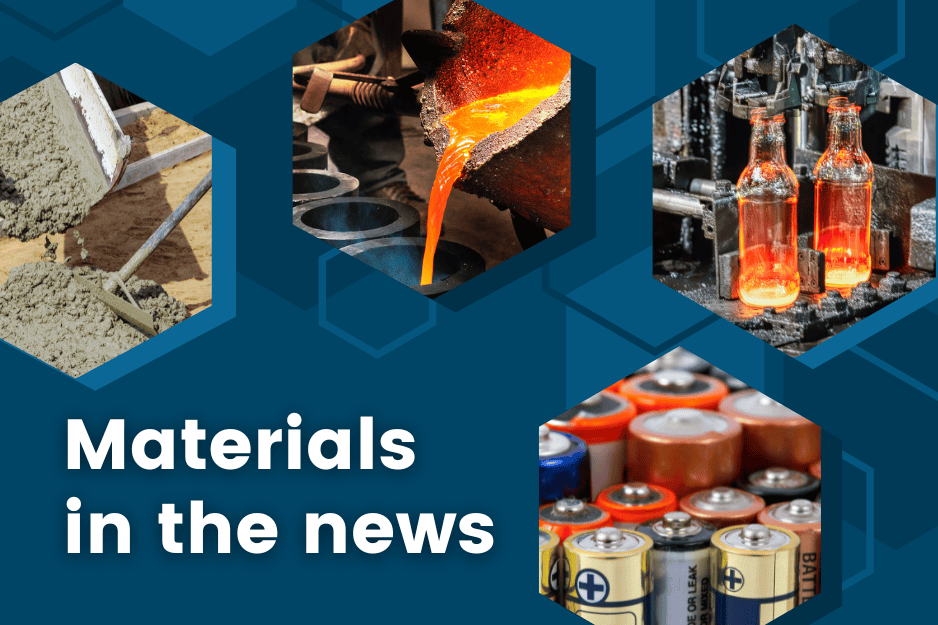
[Image above] Credit: ACerS
NANOMATERIALS
‘Nanodot’ control could fine-tune light for sharper displays, quantum computing
Researchers at The Pennsylvania State University and Université Paris-Saclay showed how the light emitted from 2D materials can be modulated by embedding a second 2D material inside them.
Researchers create carbon quantum dots from clove residue
Dongguk University researchers explored a sustainable way to create carbon quantum dots from clove residue left after extracting essential oil. These quantum dots were tested for their ability to form Pickering emulsions, which are more stable and have enhanced antibacterial properties compared to traditional emulsions using Polysorbate 80.
ENERGY
Who produces the better EV battery?
Researchers took apart batteries from two leading electric vehicle brands—BYD and Tesla—to try to work out which one had the best battery. They concluded that, overall, BYD’s battery was more efficient because it allowed easier thermal management.
Solar cells 50x thinner than human hair, 25x lighter
Researchers from Queen Mary University of London and solar startup Power Roll have come together to commercialize a perovskite solar film that is exceptionally thin (less than a millimeter) and much lighter (25 times) than the lightest silicon solar panels.
ENVIRONMENT
Study finds Japanese buildings absorb 14% of cement production’s carbon footprint
Researchers discovered that Japan’s concrete structures absorb and store about 14% of the carbon dioxide emissions generated during cement production. Concrete naturally absorbs CO2 throughout its lifetime. Though this process can contribute to the corrosion of reinforcing steel bars, it also enables concrete structures to function as carbon sinks.
Climate change will reduce the number of satellites that can safely orbit in space
Massachusetts Institute of Technology aerospace engineers found that greenhouse gas emissions are changing the environment of near-Earth space in ways that, over time, will reduce the number of satellites that can sustainably operate there.
Researchers from the MiningImpact project and the German Federal Institute for Geosciences and Natural Resources monitored the test of an industrial pre-prototype nodule collector vehicle in the Clarion-Clipperton Zone and analyzed the spread of the suspended sediment plumes and the patterns of sediment redeposition in space and time.
MANUFACTURING
Graphene production method offers green alternative to mining
KTH Royal Institute of Technology researchers developed a reproducible and scalable method for producing graphene oxide nanosheets from commercial carbon fibers. The process involves exfoliating the fibers with nitric acid, which provides high yields of graphene oxide with characteristics comparable to commercial graphene oxide sourced from mined graphite.
Microwave energy enables low-cost production of carbon fiber
University of Limerick researchers used an innovative plasma and microwave heating method to make carbon fiber, replacing the conventional heating processes and significantly reducing energy consumption by as much as 70% while maintaining material performance.
Reusing auto parts lowers carbon footprint and strengthens domestic supply chains
Worcester Polytechnic Institute researchers showed that reusing automobile parts can greatly cut greenhouse gas emissions without sacrificing the quality of the products. The research examined commonly reused components such as engines, transmissions, bumpers, headlights, and doors across different vehicle types.
OTHER STORIES
Triple bond formed between boron and carbon for the first time
Chemists at Julius-Maximilians-Universität Würzburg succeeded in synthesizing a molecule with a boron–carbon triple bond, which exists as an orange solid at room temperature. In the novel molecule, the boron atom is in a linear arrangement with carbon atoms.
Ceramic powders with Archimedean shapes resist extreme heat and oxidation
Researchers from the Hefei Institutes of Physical Science of the Chinese Academy of Sciences synthesized high-quality boride ceramic powders with an Archimedean shape. The powders’ complex, highly symmetrical geometries enhance the mechanical and electrical properties.
Scientists create most powerful ultrashort electron beam in the world
Researchers at SLAC National Accelerator Laboratory created an ultrashort electron beam with five times more peak current than any other similar beam on Earth. The key to this innovation was using a laser-based shaping technique originally developed for X-ray free-electron lasers to compress billions of electrons into a length less than one micrometer.
Ice on the moon more common than previously thought
Direct measurements taken by India’s Chandrayaan-3 lunar lander may have confirmed that ice exists just a few centimeters beneath the moon’s surface. These findings could aid in future crewed long-term missions or habitation of the moon by providing local sources of water.
Author
Lisa McDonald
CTT Categories
- Weekly Column: “Other materials”